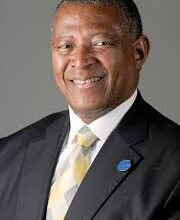We must use history to heal our country
Published 7:50 pm Wednesday, December 9, 2015
The contrasts were great. Non-violence taught but violence implemented. History of violence shunned but current violence shared widely. Symbols of nonviolence known all over the world but the massive reality of violence unknown. The contrasts were so great.
This week led up to the 150th Anniversary of the end of chattel slavery in the United States of America. This slavery was the world’s most violent and inhumane. The Selma Center for Non-Violence, Truth and Reconciliation was holding a Week of History and Healing. commemorating the end of slavery. But the media was full of violence in San Bernadino, CA where 14 human beings were murdered and 21 injured. The contrasts were so great.
The Week of History and healing included the following: a street crusade challenging gangs and other forms of community violence; a Brotherhood, Chicken and Beer gathering for potential and current gang members with Silky Slim, a former gang member and long term prison inmate; history with Dr. Robert White, a well-known historian; conflict resolution training with expert Ted Quant; Restorative Justice training with Eric Butler; history with writer/ lecturer Tony Browder and nonviolence training with Dr. Bernard Lafayette. The week was capped with the play, Selma, the Musical on Friday and the MaaFa Celebration on Saturday. The week was truly a wide ranging experience in teaching and learning non-violence. However, it was overshadowed by an act of violence that left many dead and more injured. The contrast was so great.
This was the 351st mass shooting in the United States this year. A mass shooting is an event where four or more persons are shot during one encounter. The United States of America has far more mass shootings than any other country in the world. In fact, the United States has more than half the mass shootings in the world.
We don’t want to talk about the roots of this violence. Why is there so much more violence in the richest country in the world with the most stable and democratic government? It cannot be that people are worse than people in other countries. We really need to know. That’s why this entire week was dedicated not only to nonviolence but to truth, reconciliation and healing. But we don’t really want to know the root causes. The violence is so prevalent but the need to end the violence is so pressing. The contrast is so great.
In my humble opinion, slavery is the tap root of this culture of violence. It took massive violence to implement and maintain chattel slavery in the United States because it was so oppressive. Every level of government was involved: national, state and local. Every economic institution was involved. Every religious institution was involved. Every cultural institution was involved. Yet, each of these entities proclaimed the high ideals of peace and freedom while perpetuating chattel slavery. The contrasts were so great.
Slavery officially ended 150 years ago with the ratification of the Thirteenth Amendment to the Constitution of the United States of America. Georgia, the last state needed to ratify the Amendment, did so on December 6, 1865. Adoption of the 13th Amendment was certified by Secretary of State William Seward on December 18, 1865. Many of us think that the Emancipation Proclamation issued on January 1, 1863 ended slavery. It just declared free enslaved persons in states and/or areas in rebellion against the United States. Others think that the conclusion of the Civil War in April of 1865 ended slavery. However, slavery was still legal in the United States. Still others think that the end of slavery came on June 19, 1865 (Juneteenth), when enslaved persons in Texas were declared free. In reality, slavery was still practiced in many states. Only the ratification of the 13th Amendment ended slavery. The confusion is so widespread but the truth is so simple. The contrast is so great.
The 13th Amendment formally ended slavery in 1865 but the roots of slavery were so deeply imbedded in every institution that continues to bedevils us to this very day. Widespread violence was one legacy of slavery. Ingrained white supremacy was another. Together, they spawned a hundred years of legal segregation from the official end of slavery to the passage of the 1964 Civil Rights Act and the 1965 Voting Rights Act. Another 50 years of residual segregation followed and continues. The need to talk about slavery and its legacy is so critical. The fear of talking about slavery and its legacy is so overwhelming. The contrast is so great.
The Week of History and Healing was designed to discuss that which is not discussable. However, the violence of the moment swamped both history and healing.
But the seeds are planted. May they grow and produce abundantly.
When a tree produces poisonous fruits, the only way to end it is to rid the soil of the roots. History is our cultural roots.
That’s why we really need history to heal.




